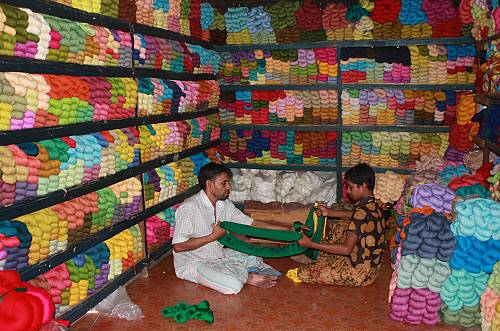Traditional art of Jamdani weaving
Inscribed in 2013 (8.COM) on the Representative List of the Intangible Cultural Heritage of Humanity

Jamdani is a vividly patterned, sheer cotton fabric, traditionally woven on a handloom by craftspeople and apprentices around Dhaka. Jamdani textiles combine intricacy of design with muted or vibrant colours, and the finished garments are highly breathable. Jamdani is a time-consuming and labour-intensive form of weaving because of the richness of its motifs, which are created directly on the loom using the discontinuous weft technique. Weaving is thriving today due to the fabric’s popularity for making saris, the principal dress of Bengali women at home and abroad. The Jamdani sari is a symbol of identity, dignity and self-recognition and provides wearers with a sense of cultural identity and social cohesion. The weavers develop an occupational identity and take great pride in their heritage; they enjoy social recognition and are highly respected for their skills. A few master weavers are recognized as bearers of the traditional Jamdani motifs and weaving techniques, and transmit the knowledge and skills to disciples. However, Jamdani weaving is principally transmitted by parents to children in home workshops. Weavers – together with spinners, dyers, loom-dressers and practitioners of a number of other supporting crafts – form a closely knit community with a strong sense of unity, identity and continuity.









